The concept of decisive battle conjures up visualisations of Napoleonic era single point battles aiming to annihilate an adversary in one single action. Such a goal naturally appears at odds with the concept of operational art which seeks to use skill and experience to plan and orchestrate more comprehensive operations to achieve success. Nevertheless, a more thorough and contemporary appreciation of decisiveness focused on effects and actions reveals that a bias for decisive action cannot be so easily judged at odds with operational art. As such, this paper will propose that an ongoing desire by western militaries to seek decisive effects on an adversary does not stand at odds with the concept of operational art. This thesis is founded on two key arguments: firstly, that increased risk of failure in decisive operations cannot be used to justify a wholescale assessment that a bias for such operations is at odds with the concept of operational art; and secondly that operational art is, in fact, decisive in nature—fuelled by its application in western planning frameworks centred on decisive methodologies.
To establish a foundation for analysis, the initial section of this paper will contextualise operational art and decisive action. The concept of operational art will be introduced by understanding its origins and contemporary application in planning and execution. Subsequently, this section will importantly explore the assumption that there is an ongoing desire for western militaries to seek a decisive, quick and efficient effect on an adversary. This analysis will note that a desire to seeks a single decisive battle is misplaced in the contemporary operational environment, yet validate the assumption and offer that western militaries have and continue to have a desire for decisive action in warfare. Building on this foundation, the remaining sections of this paper will address the proposition that a desire or bias to achieve decisive outcomes in warfare does not stand at odds with the concept of operational art. Firstly, unsuccessful or questionable applications of decisive operational action will be explored in theory and application to highlight that, while a bias for decisive action can increase the risk of failure, this assessment does not conclusively justify the statement that it stands at odds with operational art. Historical failed examples of decisive operations from the Korean War and the 2003 Invasion of Iraq will be used to reinforce this argument. Secondly, the nature of operational art will be unpacked both in its doctrinal planning and operational application. This analysis will reveal that operational art in planning is grounded in decisive methodologies, such as Centre of Gravity and Decisive Points designed to produce operational plans decisive in nature. To close the proposition of this paper will be strengthened by a brief consideration of the future operating environment. This analysis will highlight that a bias for decisive action is likely to continue with more potent and diverse capabilities, thereby reinforcing the validity of decisive action as part of and a product of operational art.
Contextualising operational art and a bias for decisive action
In response to the changing character of warfare during the First World War, the concept of operational art evolved slowly throughout the 20th century, yet is now central to western military planning. Prior to the First World War, military planning focused on the strategic and tactical levels of warfare.[1] However, this traditional view of warfare was challenged by the scale, firepower and technological advances of the First World War.[2] While major powers sought to adapt during the inter-war period, it was the Soviets who would coin the term operational art in 1923 as a means of coordinating tactical activities.[3] Menning highlights that the Soviets planning and execution of synchronised operations during the Second World War stands as the first true exemplar of operational level warfare and operational art.[4] While western powers conducted large scale and coordinated operations throughout the Pacific in the Second World War and the Korean War, an inability to transform tactical successes into strategic victory in the Vietnam War is largely viewed as a turning point for western militaries formally adopting the operational level of warfare and operational art in the 1980s and 1990s.[5] While the concept will be explored throughout this paper, Australian doctrine defines operational art as “the skilful employment of military forces to attain strategic goals through the design, organisation, sequencing and direction of campaigns and operations.”[6] Other than procedural aspects of orchestrating operations, operational art includes a judgement and experience-based element: for example the term skilful,[7] is used in the Australian definition.[8] This essential element offers a contemporary view of operational art as a planning methodology founded in the skill and experience of a commander and their staff. Nonetheless, before exploring whether a western bias for decisive action stands at odds with this concept, the assumption that a bias exists must first be validated.
While a bias for victory through a single decisive battle is no longer relevant in the contemporary environment, a view that western militaries have an ongoing desire to achieve victory through decisive and efficient means in war is accepted. The concept of victory through decisive battle casts a theoretical lens back to the Napoleonic era.[9] While the scale of campaigns during this period were significant, the focus on decisive victory through single decisive battle characterised the period and continued to influence early 20th century commanders.[10] Yet, the advent of the operational level of war in the 20th century rendered the tactically based concept of single decisive battle inappropriate and unworkable.[11] Reinforcing this view, Vego highlights that the contemporary environment offers very few opportunities where a combat operation can be resolved in a single battle.[12] While this view challenges a claim that a western bias for decisive battle can exist in the contemporary environment, an ongoing focus on decisive effects and efficiency in warfare is assessed to have endured as a culture within western militaries. Of note, the conceptualisation and indoctrination of manoeuvre warfare within western powers in the late 20th and early 21st century, is assessed to have fuelled a contemporary centrality on decisiveness and efficiency.[13] The manoeuvrist approach retained the ethos of early strategic thinkers in seeking a decisive outcome, yet rather than single battle, manoeuvre warfare places a decisive lens on efficient and indirect actions to target an adversary’s weakness,[14] drawing a historical link to the theory of winning without fighting, offered by Sun Tzu.[15] This doctrinally backed bias for decisive planning and execution is reinforced by the illogical nature of deliberately seeking indecisive or inefficient military action.[16] With the exception of the decisive battle, this paper, therefore accepts the question’s assumption that western militaries have an ongoing desire to seek timely and decisive effects (or decisive actions) to achieve military outcomes.
Having contextualised operational art and validated an ongoing bias for western militaries to seek decisive actions in military operations, the remainder of this paper will argue that such a bias does not stand at odds with operational art. This argument will firstly dispute a counter-argument that failed decisive actions can be used as evidence to support a view that it stands at odds with operational art; and secondly, propose that the application of operational art in contemporary planning is decisive in nature, and is therefore allied with decisive effects and action, not opposed.
Failed decisive operations and operational art
It could be argued that unsuccessful historical decisive operations by western militaries support an conclusion that such an approach stands at odds with the concept of operational art. Such a perspective is underwritten by views which caution against a belief that decisive action and manoeuvre stands as a superior operational approach,[17] highlighting the negative characteristics and risks of overly decisive manoeuvrist approaches. Some academics, such as Bartholomees Jr, offer that the focus on speed and potency in overly decisive operations can easily neglect the increasingly important social and political aspects of the operational environment or the opposing force.[18] Similarly, others such as Peters, argue that decisive operations harnessing a manoeuvrist approach can be readily challenged by the risk of culmination and often result in swift turnarounds.[19] Such negative criticism could be used to fuel a counter-argument that decisive action, therefore, stands at odds with the aim of operational art, particularly the elements of successfully designing, sequencing and arranging operations. [20] While there is unquestionably risks and criticisms in a bias for decisive action evidenced by unsuccessful western military operations, this paper contends that the outcomes of unsuccessful decisive operations do not justify a wholesale conclusion at odds with the concept of operational art. Several case studies of failed western military operations which sought a decisive outcome highlight the potential for this criticism, yet a deeper analysis cautions against an assessment at odds with operational art.
A review of western military history reveals two key examples which reinforce a bias for decisive action, yet support a view that decisive failures do not necessarily indicate an approach at odds with operational art. In 1950, the United Nations Command (UNC), led by General Douglas MacArthur, led a decisive advance into North Korea following an amphibious lodgement at Inchon behind the North Korean front line.[21] While the United States President at the time, Harry Truman, expressed concern about the decisive advance risking the Chinese and Soviets entering the war, McArthur believed otherwise.[22] The operation would see UNC rapidly and decisively advance north, yet inevitably trigger the Chinese to enter the war. [23] Linking to the observations of Peters regarding the risk of decisive action and rapid turnarounds,[24] the UNC was overextended and forced to rapidly withdraw south to avoid destruction pursued by a sizable Chinese opposition.[25] Fifty years after the conclusion of the Korean War, western military powers would again be challenged by the impact of decisive action during the second Gulf War in 2003. The overwhelming success of the Coalition’s air campaign and subsequent rapid ground advance, which saw the rapid defeat of the Iraqi military and removal of the Iraqi Government, due to an operational plan founded in decisive action.[26] Yet the overwhelming success of the initial operation, particularly the removal of government agencies, famously saw the country fall into civil war.[27] Supporting a criticism that operational planners failed to consider post-invasion, counterinsurgency style operations,[28] and links with the observations of Bartholomees Jr regarding the risk of decisive manoeuvre ignoring the social and political aspects of warfare.[29]
While both cases reveal the risks involved in having a bias for decisive action, it is difficult to claim that such failures conclusively stand at odds with operational art. In Korea, MacArthur underestimated the willingness of the Chinese to enter the war in response to his decisive advance.[30] Similarly, in the 2003 war in Iraq, Coalition planners underestimated the collapse of social and political frameworks caused by decisive action.[31] While it could be hypothesised that a more comprehensive application of operational art may have avoided these failures, underestimating an adversary or a change in the social order in response to decisive action does not necessarily stand at odds with the intent of operational art. Accepting that failed western decisive operations do not necessarily constitute an assessment at odds with the concept of operational art, a lens is subsequently placed on the very nature of operational art itself.
Decisive nature of operational art
An analysis of the application of operational art in contemporary joint planning frameworks reveals vital elements which are decisive in nature and accordingly produce decisive plans. In the 1980s, western militaries sought to implement a more systematic method of implementing operational art within planning processes.[32] This systematic approach is now firmly embedded in western doctrine.[33] In Australian doctrine, the aim of operational art, seeking to skilfully design and orchestrate operations, involves two vital procedural aspects: operational design and the arrangement of operations.[34] Within the operational design stage of planning, commanders and their staff explore and analyse what is arguably the most central element of operational art in planning: centre of gravity analysis.[35] The concept draws a link back to Clausewitz who offered that the centre of gravity represented an adversary’s source of power.[36] Rather than directly targeting this centre of gravity, more contemporary applications employ the systematic model developed by Strange which seeks to undermine the centre of gravity indirectly.[37] This approach, now a core aspect of contemporary operational art, uses a process to break down the assessed centre of gravity into a series of linked critical factors to identify targetable adversary vulnerabilities.[38] In joint planning, the most influential targetable vulnerabilities are re-categorised as decisive points[39], a concept first proposed by Jomini,[40] which become the building blocks for the arrangement of operations.[41] The central and systematic focus on the adversary’s centre of gravity and its link with decisive points throughout the application of operational art in planning, speaks to the decisive nature built into this framework and the reality that operational art in planning is therefore geared to produce decisive plans which seek to defeat an adversary quickly and efficiently.
The decisive nature and outputs of operational art and design in planning were exemplified in the western Coalition’s Operation Desert Storm and Desert Shield in 1990-91 to oust the Iraqi military from Kuwait.[42] While the application of operational level air-land integration played a major role in the victory,[43] a closer look at planning and operational design within the operations reinforce a conclusion that operational art is decisive in nature and produces decisive operations. The Coalition identified Saddam Hussein himself as the centre of gravity at the strategic level, yet called out Saddam’s most significant military unit, the Republican Guard, as the centre of gravity at the operational level.[44] This focus on centre of gravity in operational design underpinned the decisive and speedy air-land operation which isolated and destroyed the Republican Guard and is often associated with the Coalition’s victory.[45] This brief example highlights, not only the decisive nature of operational art in planning through operational design and centre of gravity, but also reinforces that this decisiveness in planning correlates onto the battlefield at the operational level in the orchestration of actions which seek to defeat an adversary through the most effective and efficient means.
Looking ahead to the future, increasing complexity and more potent and disruptive military capabilities, reinforce the decisive relevance of operational art and the retention of a bias for western decisive action. Western governments such as the United States and Australia acknowledge that the contemporary and future operational environment is becoming increasingly complex with inter-state competition underwritten by potent military technologies (such as long-range strike and hypersonic technology) and grey-zone operational domains such as cyber warfare.[46] This visualisation of the future military operating environment arguably reinforces a western bias for decisive action through a growing focus on indirect and more manoeuvrist options within future conflict. While there has been debate over the application of operational art in the contemporary battlespace, often void of large-scale manoeuvre operations,[47] Menning highlights that the concept of operational art is dynamic and evolves to remain relevant.[48] A view reinforced by Australian doctrine which highlights the ability of operational art to “develop innovative, adaptive alternatives to solve complex challenges.”[49] Accordingly, the character of future conflict and the reality that operational art will continue to stand as an essential aspect of planning and execution, suggests that western military powers will continue to retain an ongoing desire for decisive effects, and such an approach will continue to remain strongly aligned with, not at odds with the concept of operational art.
Conclusion
Having initially contextualised the concept of operational art, this paper has proposed that the ongoing desire of western militaries to seek decisive effects on an adversary does not stand at odds with the concept of operational art. To justify this assessment, the initial argument offered, highlighted that an increased risk of failure in decisive operations cannot be used to justify a wholescale assessment that a bias for such operations is at odds with the concept of operational art. Some critics offer that decisive operations can risk culmination and rapid reversal, such as the UNC experienced during the Korean War, or neglect social impacts, such as the western Coalition experienced during Operation Iraqi Freedom. Yet, this paper has argued that underestimations or errors in failed decisive operations do not warrant an assessment at odds with the concept of operational art. To further justify the proposition that decisive action does not stand at odds with operational art, this paper has also highlighted the decisive nature of operational art. A nature fuelled by elements of planning doctrine, such as centre of gravity, critical factors analysis and decisive points, which shape operational plans which are characterised by decisive effects which seek to achieve the endstate in the most efficient and effective means. The planning and execution of Operation Desert Storm and Desert Shield highlight the decisive nature of operational art and operational design—particularly the impact of robust centre of gravity analysis. Accepting that operational art is decisive in nature and produces decisive and effective plans, reinforces that the two concepts cannot be at odds—rather that decisiveness is both a part of, and a product of operational art. To close, this paper reinforced that the future operating environment characterised by increased complexity and technology highlights the enduring relevance of operational art and the place of decisive action within future military planning and operations.
Bartholomees Jr, J. Boone. "The Issue of Attrition." Parameters - US Army War College Spring 2010 (2010).
Calhoun, Mark T. "Clausewitz and Jomini: Contrasting Intellectual Frameworks in Military Theory." Army History, no. 80 (2011).
Commonwealth of Australia. Australian Defence Doctrine Publication 3.0—Campaigns and Operations. (Canberra: Defence Publishing Service, 2013).
———. Australian Defence Doctrine Publication 5.0—Joint Planning. (Canberra: Defence Publishing Service, 2018).
———. Australian Defence Force Procedures 5.0.1—Joint Military Appreciation Process. (Canberra: Defence Publishing Service, 2019).
Department of Defence. 2020 Defence Strategic Update. (Canberra: Commonwealth of Australia, 2020).
Echevarria II, Antulio J. "American Operational Art, 1917-2008." In The Evolution of Operational Art: From Napoleon to the Present, edited by John Andreas Olsen and Martin Van Creveld. Oxford: Oxford University Press, 2010.
Evans, Michael. "Centre of Gravity Analysis in Joint Military Planning and Design: Implications and Recommendations for the Australian Defence Force." Security Challenges 8, no. 2 (2012).
———. "The Closing of the Australian Military Mind: The Adf and Operational Art." Security Challenges 4, no. 2 (2008).
———. "The Tyranny of Dissonance: Australia’s Strategic Culture and Way of War 1901–2005." Land Warfare Studies Centre, no. 306 (2005).
Fitzgerald, David. Learning to Forget: Us Army Counterinsurgency Doctrine and Practice from Vietnam to Iraq. Stanford University Press, 2013.
Glantz, David M. Soviet Military Operational Art: In Pursuit of Deep Battle. New York: Frank Cass, 1991.
Howard, Michael. "Preface." In The Evolution of Operational Art: From Napoleon to the Present, edited by John Andreas Olsen and Martin Van Creveld. Oxford: Oxford University Press, 2010.
Jackson, Aaron P. "Innovative within the Paradigm: The Evolution of the Australian Defence Force’s Joint Operational Art." Security Challenges 13, no. 1 (2017).
Jomini, Antoine Henri baron de. The Art of War. Translated by G Mendell and W Craighill. Philadelphia, PA: J.B. Lippincott & Co., 1863.
Luttwak, Edward N. "Attrition, Relational Maneuver, and the Military Balance." International Security 8, no. 2 (1983).
Malkasian, Carter. The Korean War 1950-1953. Oxford: Osprey Publishing, 2001.
———. "Toward a Better Understanding of Attrition: The Korean and Vietnam Wars." The Journal of Military History 68, no. 3 (2004).
Menning, Bruce. "Operational Art’s Origins." In Historical Perspectives of the Operational Art, edited by Michael D Krause and R Cody Phillips: United States Army, Government Printing Office, 2006.
Olsen, John Andreas, and Martin Van Creveld. "Introduction." In The Evolution of Operational Art: From Napoleon to the Present, edited by John Andreas Olsen and Martin Van Creveld. Oxford: Oxford University Press, 2010.
Owen, William F. "The Manoeuvre Warfare Fraud." The RUSI Journal 153, no. 4 (2008).
Peters, Ralph. "In Praise of Attrition." Parameters - US Army War College Summer 2004 (2004).
Pirnie, Bruce, and Edward O'Connell. Counterinsurgency in Iraq (2003-2006). Rand Counterinsurgency Study. Santa Monica: RAND Corporation, 2008.
Strange, Joseph L. Centers of Gravity & Critical Vulnerabilities: Building on the Clausewitzian Foundation So That We Can All Speak the Same Language. Marine Corps University (Quantico: 1996).
Strange, Joseph L, and Richard Iron. "Center of Gravity: What Clausewitz Really Meant." Joint Force Quarterly, no. 35 (2004).
US Department of Defense. "Indo-Pacific Strategy Report: Preparedness, Partnerships, and Promoting a Networked Region." (2019).
———. Joint Publication 5‐0: Joint Planning. (Washington DC: Joint Force Development, 2017).
Vego, Milan. "On Operational Art." Strategos 1, 2 (2017).
Von Clausewitz, Carl. On War. Edited by Michael Howard and Peter Paret. New Jersey: Princeton University Press, 1976.
Zi, Sun. The Art of War: Sun Zi's Military Methods. Translated by Victor Mair. Columbia University Press, 2007.
[1] Michael Howard, "Preface," in The evolution of operational art: from Napoleon to the present, ed. John Andreas Olsen and Martin Van Creveld (Oxford: Oxford University Press, 2010), IX.
[2] Bruce Menning, "Operational Art’s Origins," in Historical Perspectives of the Operational Art, ed. Michael D Krause and R Cody Phillips (United States Army, Government Printing Office, 2006), 4-5.
[3] Milan Vego, "On Operational Art," Strategos 1, 2 (2017): 19.
[4] David M Glantz, Soviet military operational art: in pursuit of deep battle (New York: Frank Cass, 1991), 18-24; Menning, "Operational Art’s Origins," 11.
[5] Edward Luttwak paraphrased in Michael Evans, "The closing of the Australian military mind: The ADF and operational art," Security Challenges 4, no. 2 (2008): 107-08; Menning, "Operational Art’s Origins," 13.
[6] Commonwealth of Australia, Australian Defence Force Procedures 5.0.1—Joint Military Appreciation Process (Canberra: Defence Publishing Service, 2019), Chap 1, 4.
[7] Emphasis added.
[8] Commonwealth of Australia, Australian Defence Force Procedures 5.0.1—Joint Military Appreciation Process, Chap 1, 4; Commonwealth of Australia, Australian Defence Doctrine Publication 3.0—Campaigns and Operations (Canberra: Defence Publishing Service, 2013), Chap 1, 15.
[9] Menning, "Operational Art’s Origins," 4.
[10] Menning, "Operational Art’s Origins," 4.
[11] Menning, "Operational Art’s Origins," 6.
[12] Vego, "On Operational Art," 19.
[13] Michael Evans, "The Tyranny of Dissonance: Australia’s Strategic Culture and Way of War 1901–2005," Land Warfare Studies Centre, no. 306 (2005): 1-2; William F Owen, "The manoeuvre warfare fraud," The RUSI Journal 153, no. 4 (2008): 62.
[14] Edward N Luttwak, "Attrition, Relational Maneuver, and the Military Balance," International Security 8, no. 2 (1983): 177.
[15] Sun Zi, The art of war: Sun zi's military methods, trans. Victor Mair (Columbia University Press, 2007), 85.
[16] Vego, "On Operational Art," 15-16.
[17] Owen, "The manoeuvre warfare fraud," 63.
[18] J. Boone Bartholomees Jr, "The Issue of Attrition," Parameters - US Army War College Spring 2010 (2010): 16-17.
[19] Ralph Peters, "In praise of attrition," Parameters - US Army War College Summer 2004 (2004): 25-26.
[20] Commonwealth of Australia, Australian Defence Force Procedures 5.0.1—Joint Military Appreciation Process, Chap 1, 4.
[21] Carter Malkasian, The Korean War 1950-1953 (Oxford: Osprey Publishing, 2001), 7, 24-28, 29.
[22] Malkasian, The Korean War 1950-1953, 29.
[23] Malkasian, The Korean War 1950-1953, 24-36.
[24] Peters, "In praise of attrition," 25-26.
[25] Carter Malkasian, "Toward a better understanding of attrition: The Korean and Vietnam Wars," The Journal of Military History 68, no. 3 (2004): 919.
[26] Antulio J Echevarria II, "American Operational Art, 1917-2008," in The evolution of operational art: from Napoleon to the present, ed. John Andreas Olsen and Martin Van Creveld (Oxford: Oxford University Press, 2010), 158.
[27] David Fitzgerald, Learning to forget: US Army counterinsurgency doctrine and practice from Vietnam to Iraq (Stanford University Press, 2013), 135.
[28] Bruce Pirnie and Edward O'Connell, Counterinsurgency in Iraq (2003-2006), Rand Counterinsurgency Study, (Santa Monica: RAND Corporation, 2008), 69; Echevarria II, "American Operational Art, 1917-2008," 158-59.
[29] Bartholomees Jr, "The Issue of Attrition," 16-17.
[30] Malkasian, The Korean War 1950-1953, 29.
[31] Fitzgerald, Learning to forget: US Army counterinsurgency doctrine and practice from Vietnam to Iraq, 135.
[32] John Andreas Olsen and Martin Van Creveld, "Introduction," in The evolution of operational art: from Napoleon to the present, ed. John Andreas Olsen and Martin Van Creveld (Oxford: Oxford University Press, 2010), 2.
[33] US Department of Defense, Joint Publication 5‐0: Joint Planning (Washington DC: Joint Force Development, 2017), Chap 4, 1-2, 6-7; Commonwealth of Australia, Australian Defence Force Procedures 5.0.1—Joint Military Appreciation Process, Chap 1, 3-5.
[34] Commonwealth of Australia, Australian Defence Force Procedures 5.0.1—Joint Military Appreciation Process, Chap 1, 1.
[35] Emphasis added.
[36] Carl Von Clausewitz, On War, ed. Michael Howard and Peter Paret (New Jersey: Princeton University Press, 1976), 595-96.
[37] Joseph L Strange, Centers of Gravity & Critical Vulnerabilities: Building on the Clausewitzian Foundation So That We Can All Speak the Same Language, Marine Corps University (Quantico, 1996), 43.
[38] Aaron P Jackson, "Innovative within the Paradigm: The Evolution of the Australian Defence Force’s Joint Operational Art," Security Challenges 13, no. 1 (2017): 72-73; Commonwealth of Australia, Australian Defence Force Procedures 5.0.1—Joint Military Appreciation Process, Chap 3, 11-14.
[39] Emphasis added.
[40] Antoine Henri baron de Jomini, The art of war, trans. G Mendell and W Craighill (Philadelphia, PA: J.B. Lippincott & Co., 1863), 86; Mark T Calhoun, "Clausewitz and Jomini: Contrasting Intellectual Frameworks in Military Theory," Army History, no. 80 (2011): 27-34.
[41] Commonwealth of Australia, Australian Defence Force Procedures 5.0.1—Joint Military Appreciation Process, Chap 3, 35.
[42] Echevarria II, "American Operational Art, 1917-2008," 156.
[43] Echevarria II, "American Operational Art, 1917-2008," 156.
[44] Joseph L Strange and Richard Iron, "Center of gravity: what Clausewitz really meant," Joint Force Quarterly, no. 35 (2004): 26.
[45] Michael Evans, "Centre of gravity analysis in joint military planning and design: implications and recommendations for the Australian Defence Force," Security Challenges 8, no. 2 (2012): 87; Menning, "Operational Art’s Origins," 17.
[46] Department of Defence, 2020 Defence Strategic Update (Canberra: Commonwealth of Australia, 2020), 11-14; US Department of Defense, "Indo-Pacific Strategy Report: Preparedness, Partnerships, and Promoting a Networked Region," (2019): 8-9.
[47] Evans, "The closing of the Australian military mind: The ADF and operational art," 109.
[48] Menning, "Operational Art’s Origins," 18.
[49] Commonwealth of Australia, Australian Defence Doctrine Publication 5.0—Joint Planning (Canberra: Defence Publishing Service, 2018), Chap 2, 2.


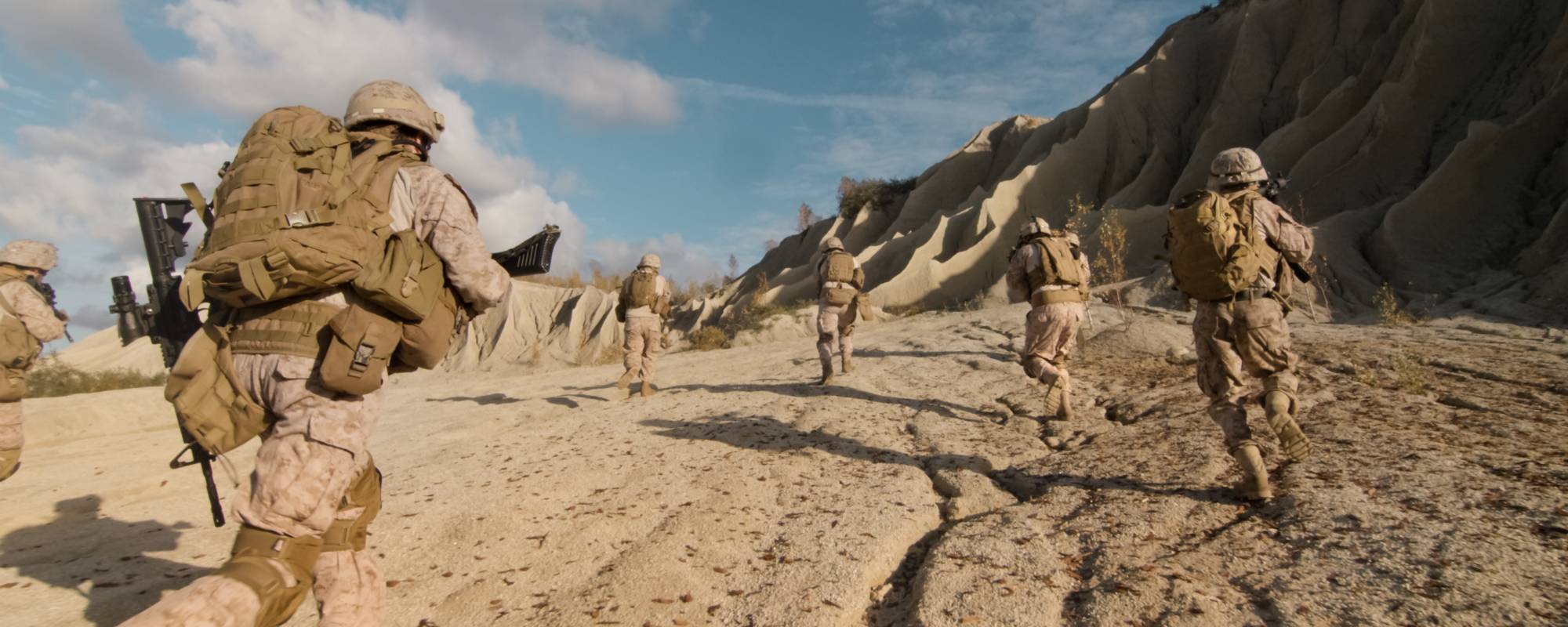
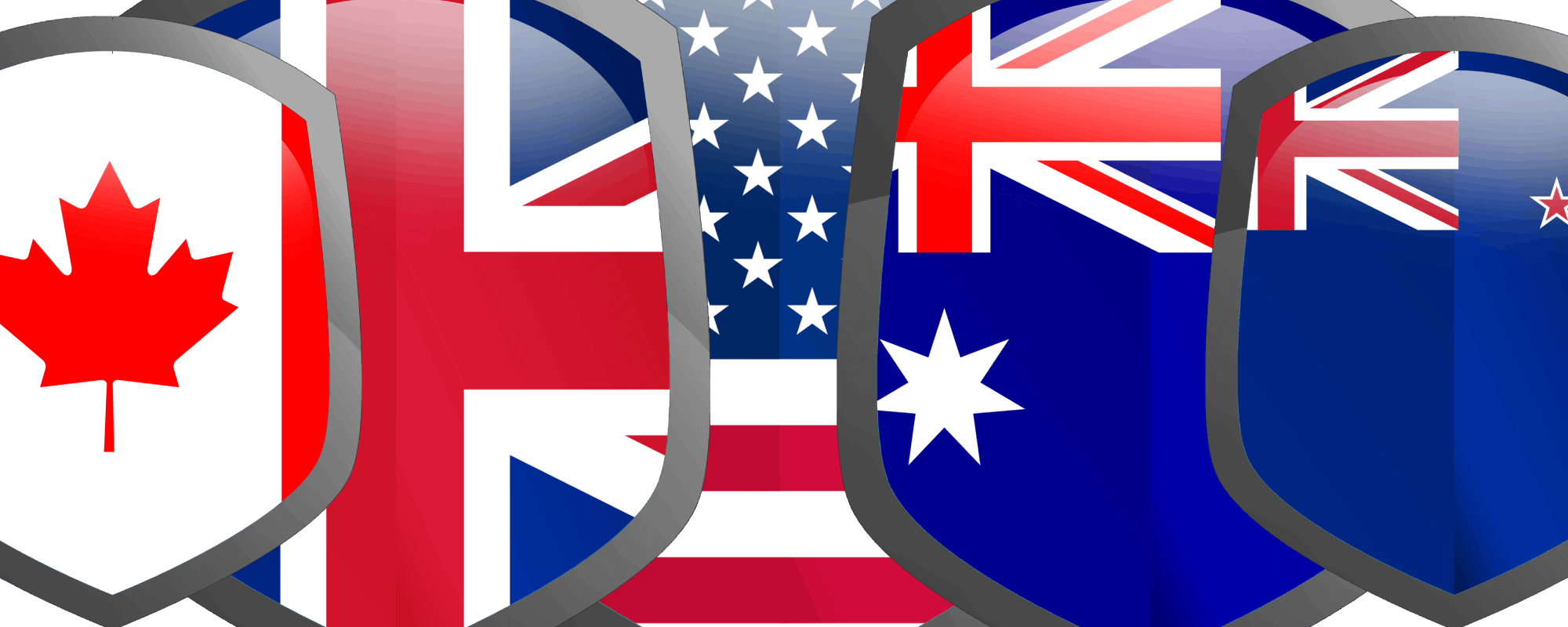


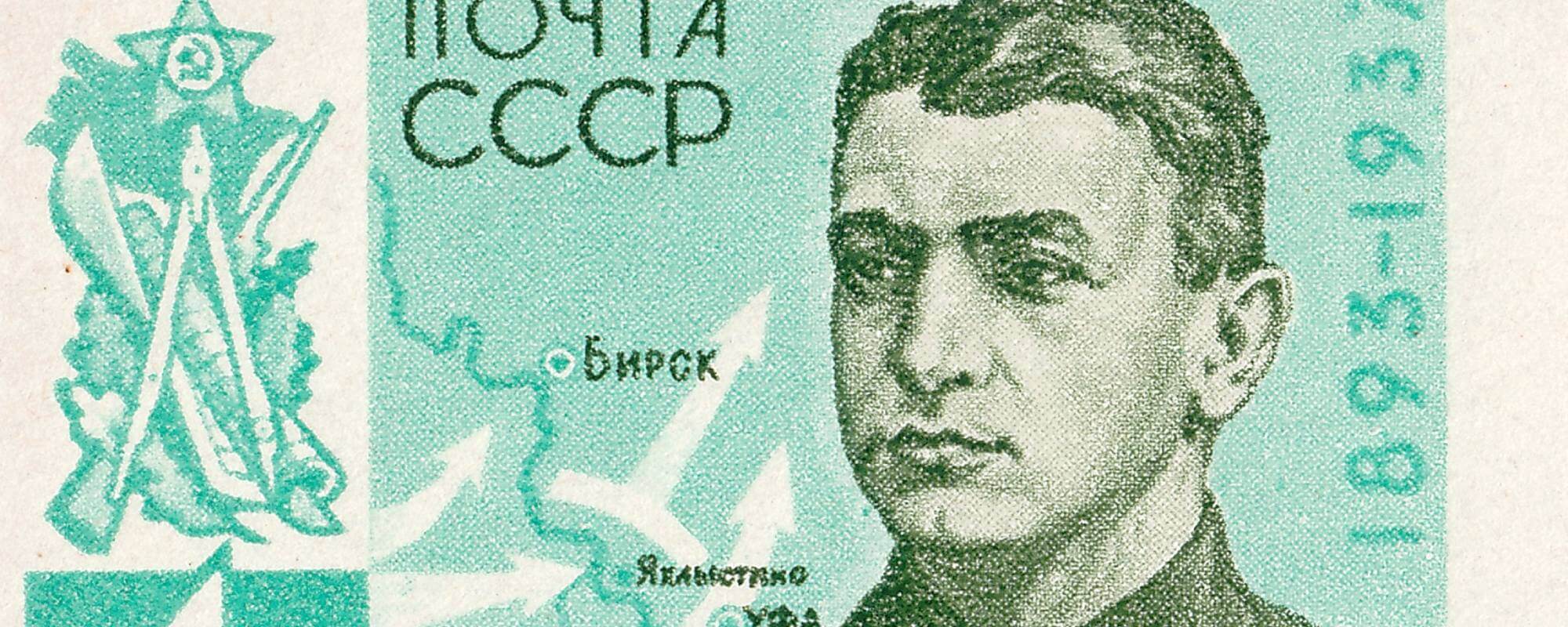
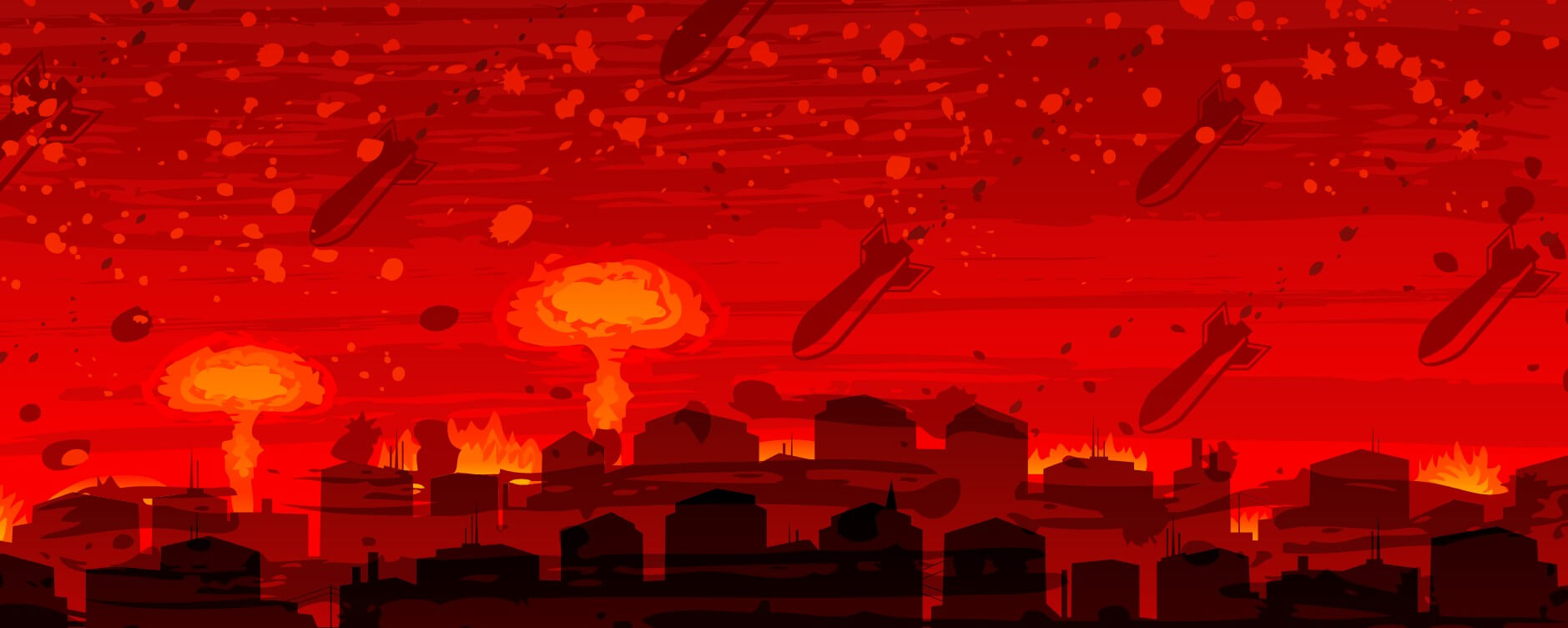
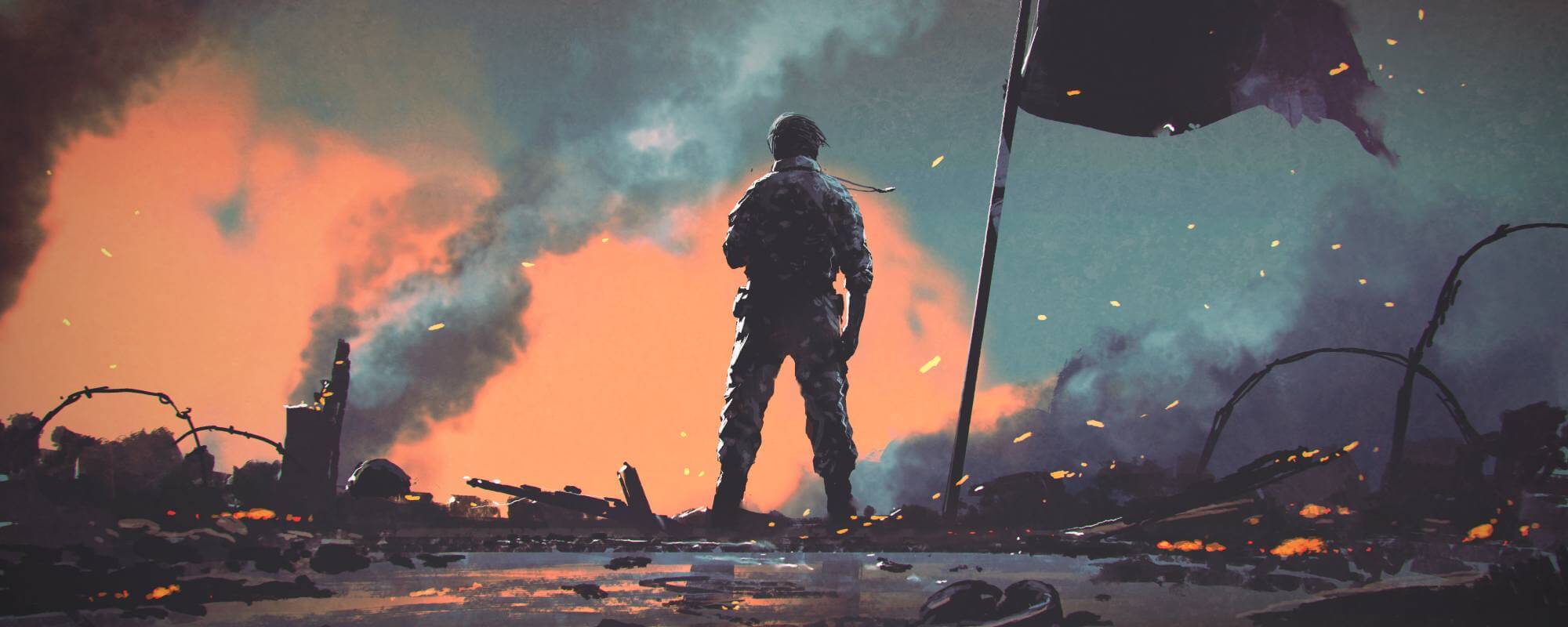
Comments
Start the conversation by sharing your thoughts! Please login to comment. If you don't yet have an account registration is quick and easy.